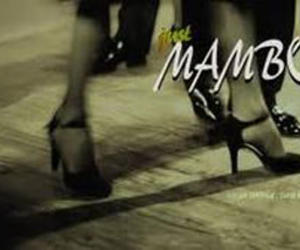When Cuba Invaded America
- Submitted by: manso
- Arts and Culture
- 10 / 16 / 2010

OCTOBER 16, 2010.Cuba once had an outsize cultural influence on the U.S., shaping American tastes in music, movies, drinks and providing the buttoned-down citizenry an enticing notion of how to get away from it all—even though getting away often involved no more than stepping into a Havana-themed nightclub in New York.
As Cuban-American poet and professor Gustavo Pérez Firmat notes in "The Havana Habit," Cuba beckoned in part because it was eminently exotic and nearly next door. The musical "Guys and Dolls" captures the island's essential appeal for Americanos: Sky Masterson could hop a plane to Havana with Sister Sarah Brown, shatter her inhibitions in one evening of rum-laced tropical revelry and still make it back to Manhattan in the morning. The allure of Cuba, says Mr. Pérez Firmat, was captured in the Cole Porter song "So Near and Yet So Far," sung against a backdrop of Havana Harbor in the 1941 movie "You'll Never Get Rich."
In "The Havana Habit," Mr. Pérez Firmat catalogs the ways in which Cuba has influenced American tastes and infiltrated
American culture. He offers a grab-bag of pop-culture references from the 1920s to the 1980s, usually without descending into academic cant. Though he doesn't have much of a thesis to knit together his wide-ranging compendium of cocktails, conga lines, Cuba-themed films, and 1940s "Maraca musicals," the piling up of examples does manage to suggest the pride of place Havana once had in the American imagination.
Mr. Pérez Firmat muses about the appeal of the foreign, and marvels at how Havana came to promise Americans the chance to tap their more passionate selves. But he never gets down to asking why it is that certain aspects of Cuban culture—in particular, Cuban music—have had such a powerful effect on everyday Americans. "The popularity of Cuban rhythms dates back to the tourist boom of the 1920s," Mr. Pérez Firmat writes. But Havana rhythms were part of American popular music well before that.
Scott Joplin and W.C. Handy, among other composers of early jazz, worked with a new sort of syncopation that drew, somewhat, on the rhythm of the habanera, a Cuban dance music that became fashionable enough in 19th-century Europe that it provided the lilting bass line for the famous aria in Bizet's "Carmen." New Orleans pianist Jelly Roll Morton once explained that the blues he wrote had a "Spanish tinge," and proclaimed: "If you can't manage to put tinges of Spanish in your tunes, you will never be able to get the right seasoning, I call it, for jazz." He said he found that seasoning in songs such as "La Paloma," a famous habanera.
Of course Mr. Pérez Firmat is right that Americans first had direct and sustained contact with things Cuban in the 1920s, when liquor was officially illegal in the States, and the unofficial slogan of Cuban tourism was "Have one in Havana!"
Yankee pleasure-seekers returned from their "alcoholidays" with a taste not only for Cuban rum but for the island's dance and songs.
The Havana Habit
By Gustavo Pérez Firmat
Yale University Press, 245 pages, $25
The fads came in waves. The first was the rumba—"an elastic term," as Mr. Pérez Firmat says, that came to include a variety of Cuban dance rhythms, from "up-tempo sones [to] languid boleros, and bore only a distant relation to the Afro-Cuban rumba." It hit the States in earnest in 1930 with "The Peanut Vendor" and spawned more than a decade's worth of songs of varying Cuban authenticity, from "Canto Siboney" to a novelty about a fellow named Yuba who plays the rumba on his tuba down in Cuba.
Why the rumba and not some other Latin American genre? No doubt sheer proximity helped. And there was some familiarity, given the smidgen of Cuban rhythm already in the mix of American music. Mr. Pérez Firmat suggests that one attraction of the rumba was that it was less threatening than, say, Argentina's overtly seductive tango: "Smooth rather than sultry, the rumba is a dance of courtship, not possession." The music had the same cheerful Cuban charm, he says, that made Ricky Ricardo (played by island-born bandleader Desi Arnaz) so appealing to Americans on "I Love Lucy."
The rumba had a long run, lasting all the way into World War II. But by 1945 it was passé. That year, June Christy recorded a tune about the Mexican tourist town Tampico with the Stan Kenton orchestra. She sings about asking the local band to play a rumba: The bandleader "turns and says to the boys, 'Hey, fellas, dig that square.' " The rumba was done.
Is it any surprise, then, that a Cuban bandleader enamored of the Kenton band would abandon the rumba for a bombastic new variation called the mambo? Pérez Prado led the mambo mania that reached a fever pitch in the early 1950s—essentially, the "I Love Lucy" years. It too had a long run, finally being supplanted in the late 1950s with the short-lived cha-cha-cha, the last of the popular Cuban musical imports.
Most foreign cultures that have had a notable influence on American life have come by way of immigrants. We can thank German-Americans for our taste for beer, for instance.
By contrast, Cuban culture was something Americans picked up on their travels and brought back to the States. Ironically, when Cubans did finally come to the U.S. in large numbers, after Fidel Castro's 1959 revolution, their impact on American life diminished. The Latin American music craze of the 1960s was, for once, not Cuban in origin but Brazilian: the bossa nova.
By ERIC FELTEN
Source: http://online.wsj.com/article/
Comments